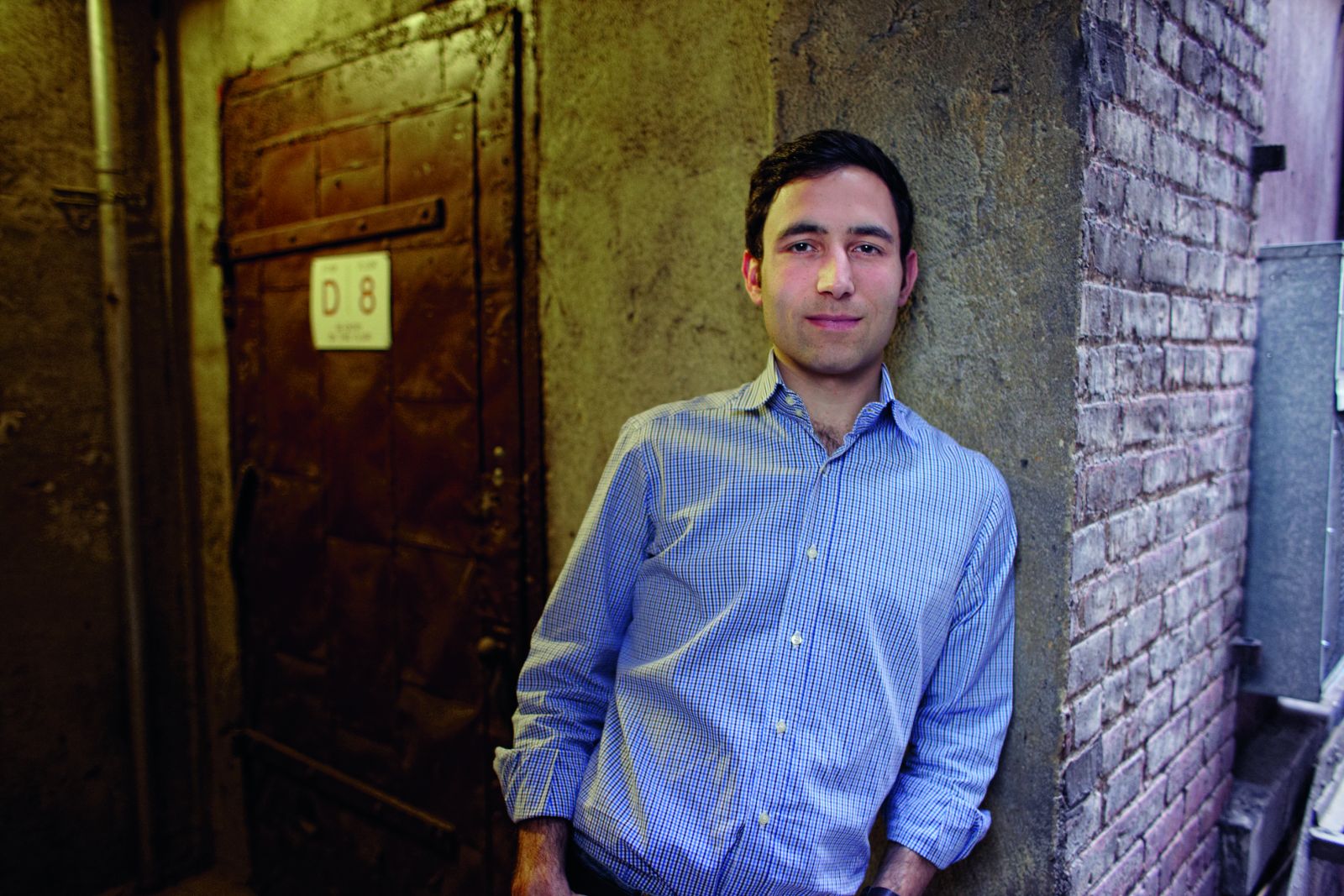Scott Belsky on the Behance Network
Scott Belsky, founder of Behance, talks to Oliver Lindberg to explain why creatives should have a personal portfolio site and be on his network, how to market yourself efficiently and what needs to be done to fix crowdsourcing
This article first appeared in issue 216 of .net magazine - the world's best-selling magazine for web designers and developers.
A few hundred thousand creatives from dozens of disciplines showcase their work on the Behance Network. It’s become the largest online platform for creative professionals and attracts more than five million visitors every month. CEO and founder Scott Belsky calls it “the LinkedIn of the creative world”. And now, with a new service called ProSite, Belsky is about to silence critics who claim it’s better to have a personal portfolio site.
ProSite enables you to build a fully customisable personal portfolio website with your own domain name that seamlessly syncs with your Behance portfolio. The service doesn’t require you to know any programming, supports unlimited multimedia projects and comes with no Behance branding and ads. “ProSite aims to change the whole industry,” Belsky enthuses. “We can’t even recognise the websites that are made using this technology. That tells us that we’re on to something.”
ProSite aims to change the whole industry. We can't even recognise the websites that are made using this technology. That tells us we're onto somethingScott Belsky
ProSite is part of Belsky’s masterplan to organise the creative world and help talented people to get the attention they deserve. “We’re trying to boost the efficiency of creative professionals managing their brand and career,” Belsky explains. “A big part of that is that you shouldn’t be spending tons of time building a personal website that’s often only viewed by the people you know.
“It’s great to have your own personal portfolio site. It’s great for your brand, for the people who know you and your existing clients. But you need to get your work in front of people that don’t know you. The chances are that your future clients don’t know you yet. In order to get your work out in the world and claim credit for it, you need to put it in a searchable system.”
How to get noticed

Behance now publishes around five projects every minute and it’s possible to sort through them by the most appreciated piece within a particular field in a certain region, for instance. An upgrade of the sorting system is in the works, so that you can also easily search by clients and tools used. “A lot of people actually come to our platform and use it to search for who did what. They see a great campaign or website and want to know who designed this. So they literally type in the brand name and figure out the designer or developer behind it. And that’s how you get your opportunities. It’s really important to have a personal site and be on Behance, which enables your work to be indexed.”
The Behance Network has turned into a valuable tool for companies such as Google, R/GA and Saatchi & Saatchi to discover new talent. Not only will they advertise positions on the JobList; if they follow a certain portfolio, they’ll also automatically get an email letting them know that a new piece of work has been added.
“There was this guy who I met at SXSW, Bobby Ghoshal,” Belsky remembers. “He was working at an agency in California and he was on the Behance Network for his side projects. Then he started getting so many new opportunities, six or seven a week, that he just left the agency! He went to be a freelancer and got contacted by Apple, who found him on Behance. They hired him to help redesign their iAds system. And while he was at Apple he met another guy who did a lot of iPad development, Matthew Ausonio. They started their own company, called Flud, which is this new iPhone/iPad app about the social creation of news. They launched the first version of it as a Behance project and got around 15,000 downloads a week. Bobby attributes a lot of that to the Behance way of showcasing the work and spreading it quickly.”
Self-marketing

Belsky reckons the creative industry doesn’t take the need to get yourself out there in as many places as possible seriously enough. “It’s uncomfortable but it’s really important. People need to be exposed to your work. You really need to think about overcoming the stigma of self-marketing. I’m not suggesting that you spam your friends and overtly promote yourself, but you have to give people the opportunity to respect your work. People have to see what
you’re up to. They have to follow you going forward, and you need to build that following. I was talking to Sarah Horowitz, the CEO of the Freelancers Union, and she said how 50 per cent of a freelancer’s job is to market themselves. To do this efficiently doesn’t mean making a better and better website. It means pushing your work out there beyond your website.”
You really need to think about overcoming the stigma of self-marketing. You have to give people the opportunity to respect your work
The Behance Network already offers various ways for creatives to showcase their portfolios outside the platform. The industry-specific Served Sites, for example, feature projects sorted by categories, including web design, illustration and typography. There are Behance galleries on AdWeek, AIGA and the Swatch MTV Playground. And last year Behance partnered with LinkedIn to enable creatives to display their portfolios on LinkedIn, using an app called Creative Portfolio Display.
It’s also important to push beyond boundaries and not stay in isolated networks of people. That’s why Behance is trying to bring different disciplines together in one place.
“In the creative world often photographers only hang out with photographers and designers only hang out with designers,” Belsky observes. “That’s not really going to help our careers. It’s going to help us refine our craft but it won’t help us expose ourselves to new opportunities. Open your eyes to working with and being exposed to people beyond your inner stream.”
Getting organised
Belsky claims the creative world lacks organisation, which is why many ideas never happen. “We don’t like to spend our energy on organising existing ideas and developing the method and the rhythm to execute a project over the long-term.”
Behance is all about organisation and execution. That’s why its think tank and conference are called the 99%, after Edison’s quote that “genius is one per cent inspiration, 99 per cent perspiration”. Last year Belsky published a book called Making Ideas Happen, for which he interviewed more than 200 especially productive creatives. He discovered that many focus a lot on organisation and execution. They have retreats and meetings to discuss their processes, share ideas and always try to get feedback. “What they were really trying to do was stay accountable,” he says. “If you don’t tell other people what you’re doing, no one’s going to hold you accountable and you’re never going to get it done.”
You shouldn’t be tempted to work for free and take part in a spec contest, though, reckons Belksy. “This is one of my greatest frustrations and concerns. So far, technology has been used to disempower creative people rather than empower them. These contests are incentivising careless engagement. If people know they’re probably not going to get paid for a piece of work, then they’re not going to spend more than an hour or two on it. And if they don’t spend enough time on the work, the work is bad but they put it out there with their name on it. So the attribution of the work actually backfires!”
To find a better crowdsourcing model, Behance has recently experimented with a new kind of competition. Designers were asked to submit the work from their portfolios that best showcased their talents. Those who were selected by a panel of judges then got the full brief and were paid regardless whether their pitch was chosen or not.
Belsky’s mission is clear. He wants to empower the creative professionals. And he wants the Behance Network to play a big part in it.

Thank you for reading 5 articles this month* Join now for unlimited access
Enjoy your first month for just £1 / $1 / €1
*Read 5 free articles per month without a subscription

Join now for unlimited access
Try first month for just £1 / $1 / €1
Get the Creative Bloq Newsletter
Daily design news, reviews, how-tos and more, as picked by the editors.

The Creative Bloq team is made up of a group of art and design enthusiasts, and has changed and evolved since Creative Bloq began back in 2012. The current website team consists of eight full-time members of staff: Editor Georgia Coggan, Deputy Editor Rosie Hilder, Ecommerce Editor Beren Neale, Senior News Editor Daniel Piper, Editor, Digital Art and 3D Ian Dean, Tech Reviews Editor Erlingur Einarsson, Ecommerce Writer Beth Nicholls and Staff Writer Natalie Fear, as well as a roster of freelancers from around the world. The ImagineFX magazine team also pitch in, ensuring that content from leading digital art publication ImagineFX is represented on Creative Bloq.
